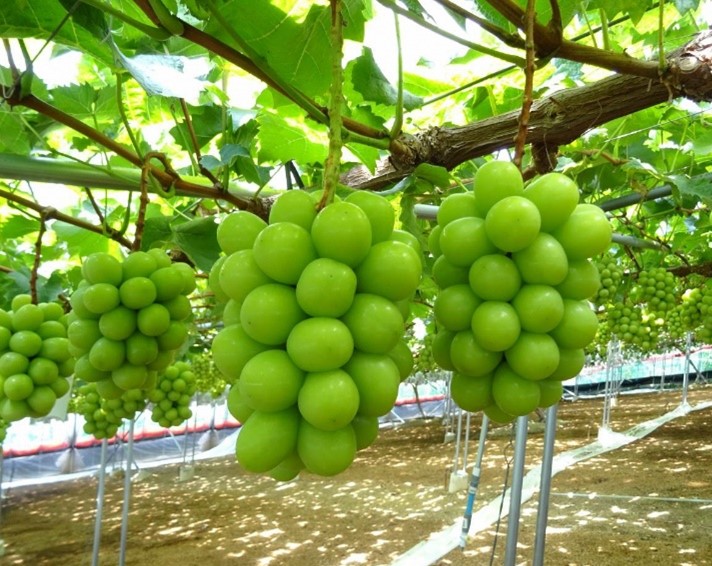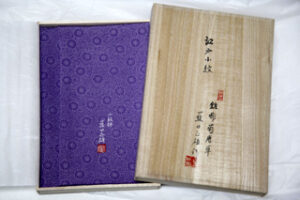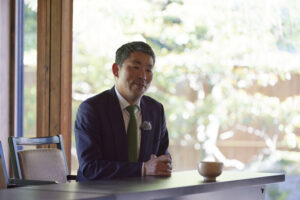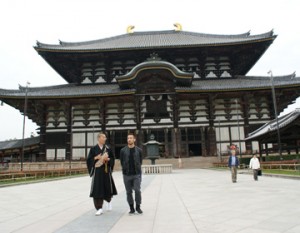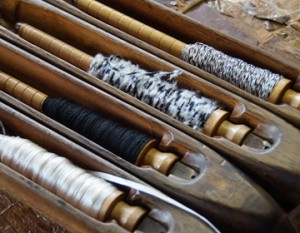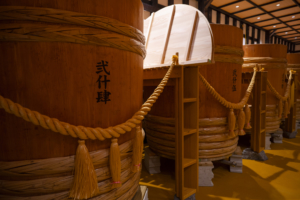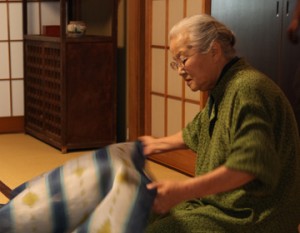Kurashiki City is located in southwestern Okayama Prefecture. The Funao district, located in a hilly area, is one of the leading grape growing areas in the prefecture, and Okayama Prefecture grows approximately 90% of the Muscat of Alexandria shipped in Japan. In recent years, the prefecture has also been engaged in the cultivation of Shine Muscat, and its large, high-quality Muscat grapes are gaining popularity both in Japan and overseas.
Muscat cultivation taking advantage of local characteristics

Kurashiki City’s Bikan Historical Quarter, where townhouses and white-walled warehouses still remain.
Located about 20 minutes by car from the center of Kurashiki City, Funao District is situated along the Takahashi River, a first-class river, and from the small hillside, you can see islands in the Seto Inland Sea and the Mizushima Industrial Zone stretching out to the sea.
Lining the steep slopes are rows of plastic Muscat greenhouses, and the Funao area is known as a major Muscat of Alexandria production area. In fact, about 90% of the Muscat of Alexandria grown in Japan is grown in Okayama Prefecture, with the Funaho area accounting for 40% of the prefecture’s shipments and 60% of its sales, with heated cultivation in particular accounting for 70% of shipments and sales between May and July (2021 results).
Mr. Mikado Asano has been a grape farmer in the area for about 40 years, and is the head of the JA Harunokuni Okayama Funaho-cho Grapes Club.
Funao District, one of the first to engage in early heated cultivation of Muscat of Alexandria
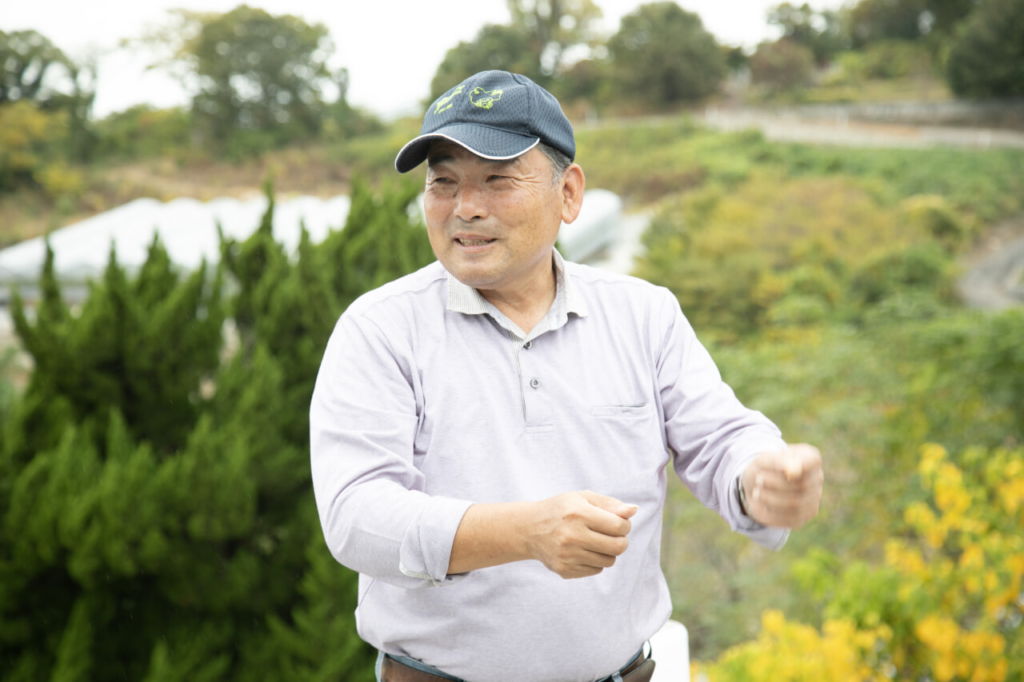
Mr. Asano has been a grape farmer for three generations, and currently grows Muscat of Alexandria and other grapes in as many as 13 greenhouses.
It is said that grape cultivation began in Okayama Prefecture around 1875. The prefecture’s high sunny rate, low rainfall, and well-drained soil make it ideal for grape cultivation, and grapevines have been actively planted in the prefecture. As a result, technological development and variety improvement have been actively carried out. Various varieties of grapes have been cultivated in the prefecture, but Muscat of Alexandria is the one that is particularly suited to the growing environment in Japan.
Muscat was susceptible to disease, but the low rainfall of the region, which is known as “Okayama, the Land of Sunshine,” made it suitable for growing in the region. This led to the cultivation of this variety in 1951.
In 1960, they succeeded in heating in December in a glass room (for shipment in early May). In 1970, the cultivation was switched to heated cultivation using plastic greenhouses, which reduced the cost of building greenhouses and led to a dramatic leap forward as a production center.
By staggering the timing of heating in each greenhouse, he not only controls the timing of shipments, but also improves productivity by spreading out the workload.
Currently, Mr. Asano’s greenhouses are mainly heated (December to March), and muscats are shipped continuously from the beginning of June to the beginning of October.
In addition to meeting the needs of the market, he has established a brand for Funaho’s grapes in the market through his constant cooperation with the market as the head of the department.
Passing on techniques to ensure a stable supply of high-quality muscats
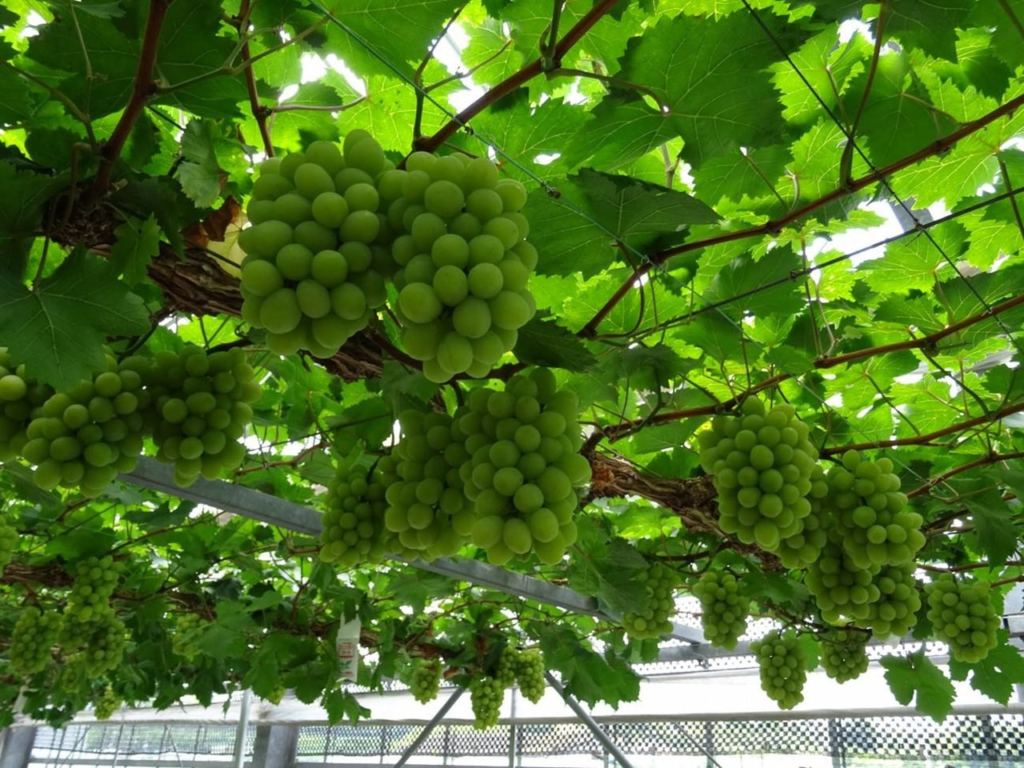
Muscat of Alexandria is known as the “Queen of Fruits” for its mellow aroma and elegant sweetness.
Grapes grown in the Funao area are characterized not only by their taste, but also by their excellent appearance, including the shape of the bunches and the uniformity of the grapes.
Buyers from Tokyo’s long-established high-end fruit stores visit the area every year, and in recent years, the grapes have been exported to Taiwan, Hong Kong, and other foreign countries. The quality of the grapes is highly evaluated not only in Japan but also overseas.
Mr. Asano says that the Funao district has been able to produce stable shipments of high-quality grapes thanks to “our predecessors.
The distinctive feature of Muscat cultivation in the Funao district is soil preparation.
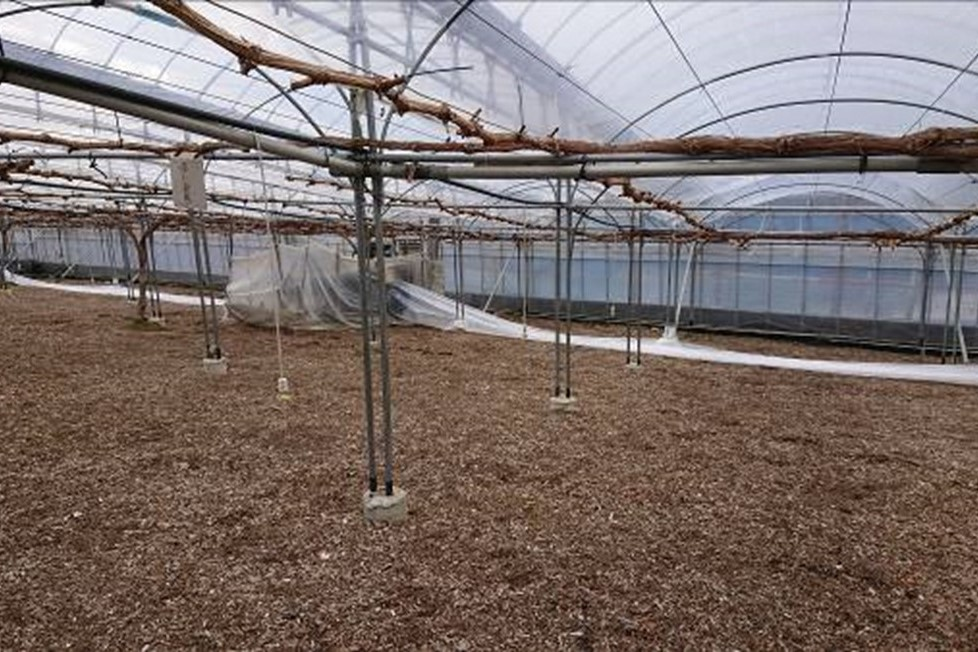
By adding “compost,” a mixture of cow manure, rice husks, and bark chips, to the soil in the greenhouses every year, the vines grow wide roots and become magnificent, according to Mr. Asano.
This method was already established 40 years ago when Mr. Asano started growing grapes.
The “JA Harunokuni Okayama Funao-cho Grape Club,” of which Mr. Asano is the chairman, conducts training sessions on grape cultivation.
He says that the club shares the knowledge gained from the guidance of the agricultural extension center, related organizations, and club members, and works to raise the level of the entire Funaho district.
Turning Pinches into Opportunities as Market Needs Change
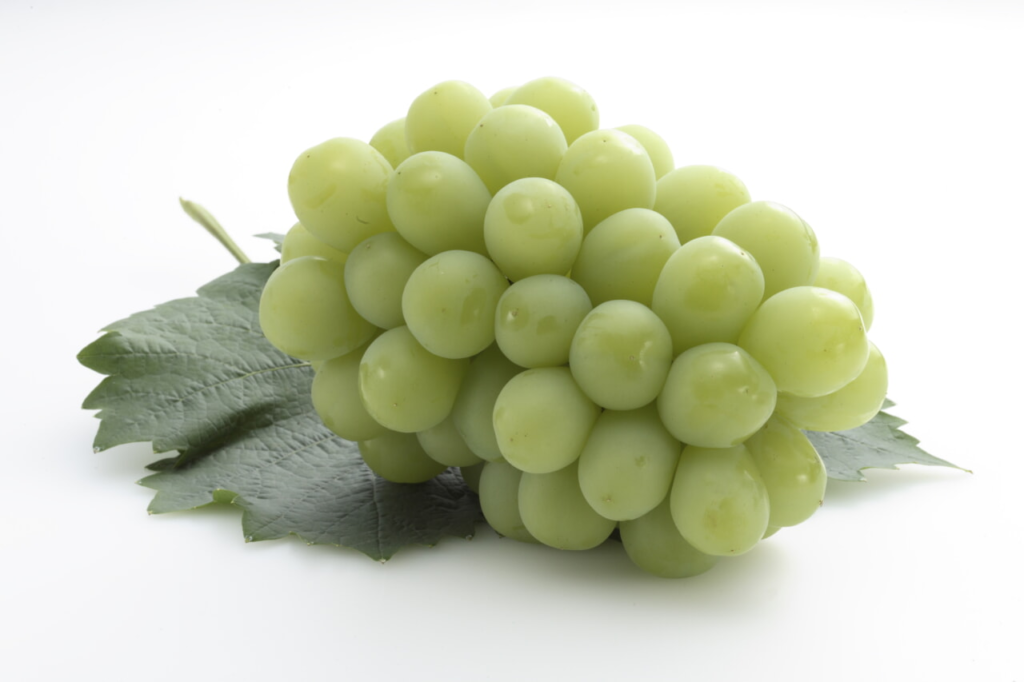
Muscat of Alexandria is a representative fruit of Okayama Prefecture, but in recent years, production has plummeted as “seedless grapes” have become the mainstream.
The production of Muscat of Alexandria in Okayama Prefecture has been affected by the economic climate, and has dropped by about one-tenth between 1989 and 2018. The same was true in the Funao area, where production dropped to about one-sixth.
This is why the company focused on “seedless” Shinemuscat grapes, which have high sugar content and can be eaten with their skins intact.
The Shine Muscat is resistant to disease and is not easily affected by weather, soil, or the growing environment, making it less labor-intensive to grow than the delicate Muscat of Alexandria. In numerical terms, Muscat of Alexandria requires about three times more labor than Muscat of Alexandria. In this respect, too, the Shine Muscat grape has gained the support of farmers, and production is expanding in the Funao district.
Mr. Asano himself is no exception, and the ratio of Muscat of Alexandria to Shine Muscat has changed over the years. Within a dozen years of starting production of Muscat of Alexandria, the ratio was reversed, and now he grows Muscat of Alexandria at a ratio of 3:7.
The Funao district was a late starter in the production of Muscat of Alexandria, but through various challenges and efforts to become a top producer, it has built the region into what it is today. The region has applied this technology to the cultivation of Muscat grapes, and was the first region in the world to use heated cultivation.
As a result, the region was able to produce grapes of higher quality than other regions in terms of sugar content, grain size, and tension. By further developing the technology inherited from their predecessors and applying it to new grape varieties, they were able to establish a market position ahead of other production areas, turning a pinch into an opportunity.
What is the future of the Funao area, a Muscat production area?
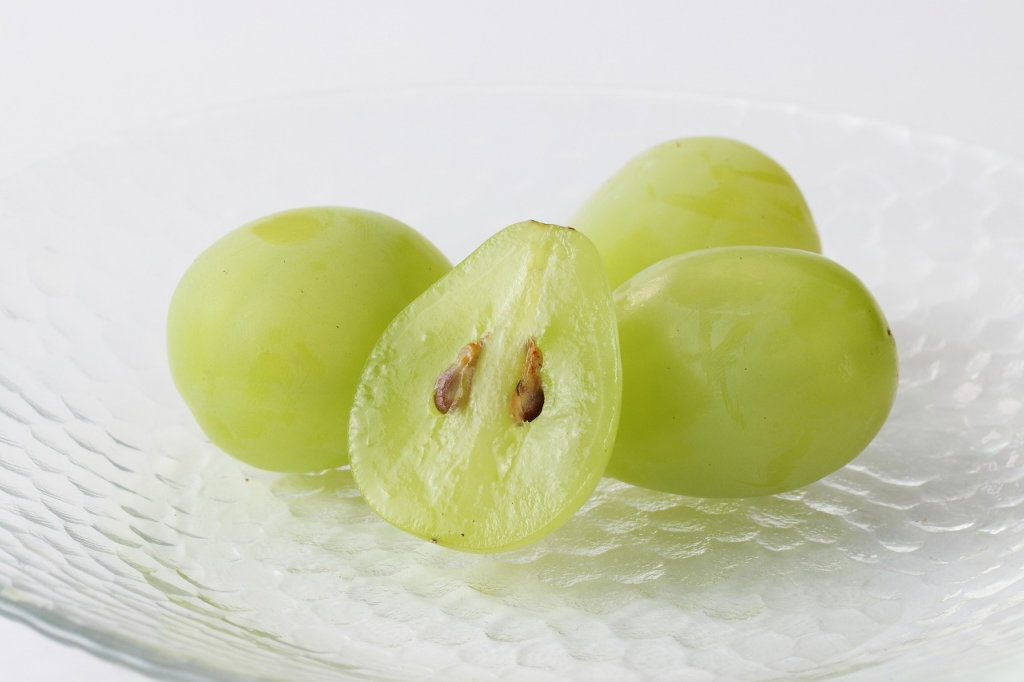
The firm, firm fruit, the crisp texture of the skin when it cracks open, the freshness, and the firm sweetness. Once you taste a Funao region Shine Muscat, you will immediately fall in love with it.
I grow grapes in the Funaho area because I believe that nothing can beat the alecki for overall taste,” says Mr. Asano. Considering the history of grape cultivation in the Funaho area, he is proud to be a grape farmer, saying, “I can’t let it die out.
The challenge for the future will be to improve both the production and quality of Muscat of Alexandria and Cheinmuscat. In an era when there is a nationwide shortage of farmers, the Funao district has nothing to do with this. In the past, the district was actively accepting newcomers who wanted to grow grapes in Funaho, but the handover to their successors has gone well, and there are not enough greenhouses available to accommodate new farmers. Therefore, they have no choice but to stop accepting new farmers.
The Funao region has established its position as a leading producer of Muscat grapes. This is due to the techniques established by our predecessors through repeated trial and error, and the tireless efforts of those who have inherited and refined these techniques. It has been about 70 years since the first Muscat of Alexandria was grown in the area.
Even though the main variety produced in the area has changed to the Cheinmuscat, each large grape with its beautiful clusters is the pride of the grape farmers in the Funao area.



